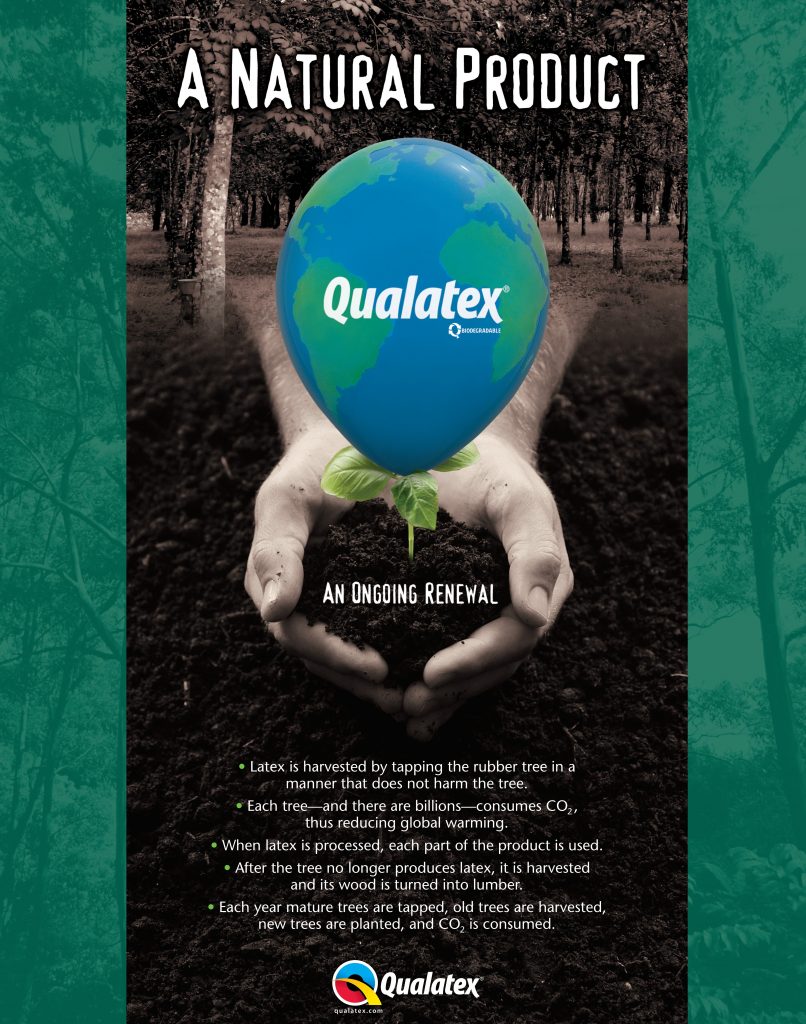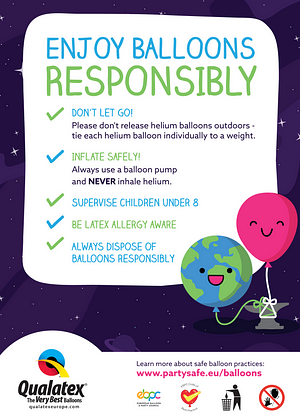Environmental Impact Of Balloons
Here is some useful information for those concerned with the environmental impact of balloons
Don’t Let Go
We do not advise releasing balloons into the air. Foil balloons and balloon ribbon are not biodegradable and are harmful to animals. Latex balloons are biodegradable but take approx 6 months to decompose
Helium Shortage Myth-Buster
There have been many articles recently calling for a ban on balloons as it’s a “waste of helium.” The helium used for balloons is actually labelled “balloon gas” – the reason being that the balloon gas we buy is not pure helium. When helium is collected, the pure helium is allocated for medical use. The byproducts (impure helium) is sold as balloon gas. It’s interesting to consider that profiting from the leftover waste makes the pure helium more affordable for hospitals. However, as helium becomes harder to find, we often suggest making balloons into air filled designs and plan on selling DIY kits in the near future
Helium Dangers
There have also been videos of balloons exploding into flames, and people claiming helium is dangerous. Helium is not flammable, but hydrogen is. Using hydrogen for balloons has been banned worldwide, but in countries such as India it’s common for people to still use hydrogen
Recycling
Foil balloons can be refilled if used correctly. Alternatively, children can use foils and ribbon for art projects. As latex balloons are 100% biodegradable, they can be disposed of and will disintegrate in approx 6 months
For more information please visit https://balloonfacts.org/
Balloons & The Environment


